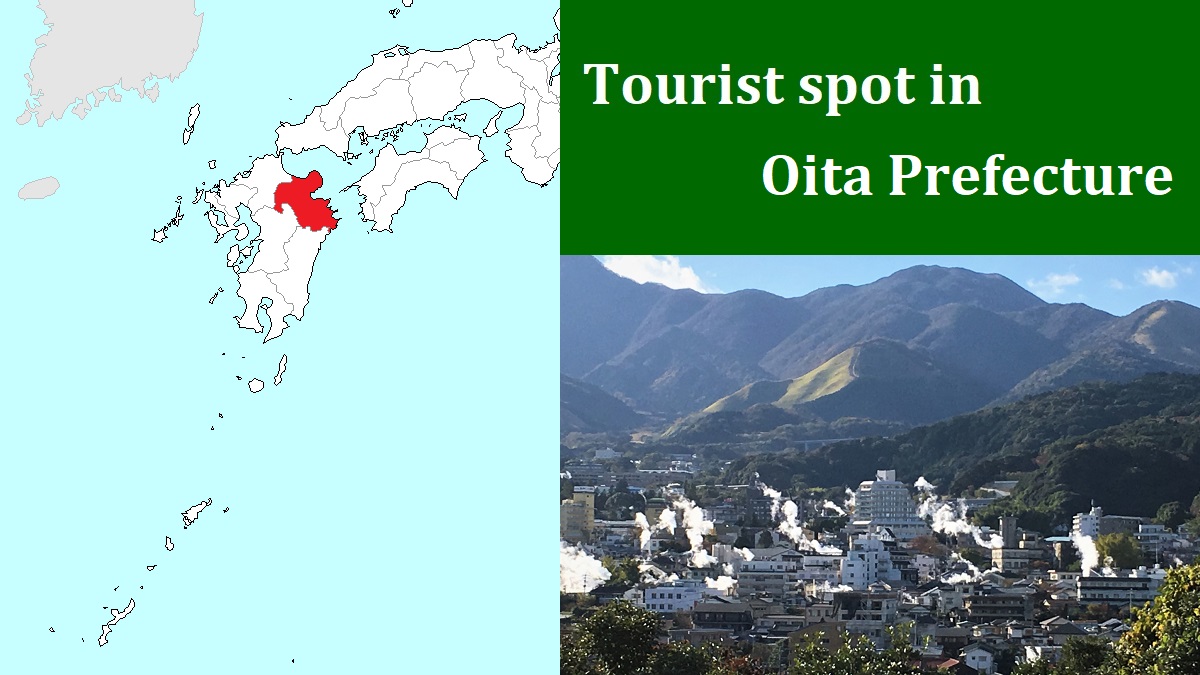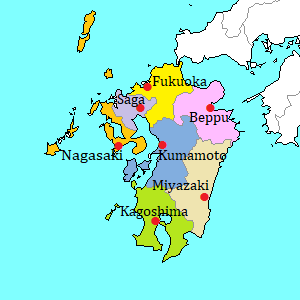Kunisaki Peninsula [国東半島]
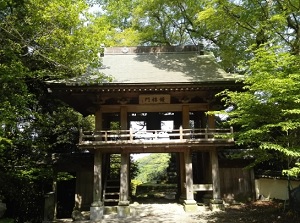
Monjusenji in Kunisaki Peninsula
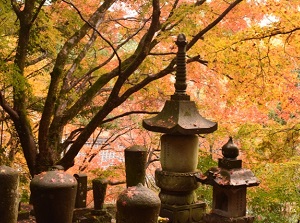
Fukiji in autumn
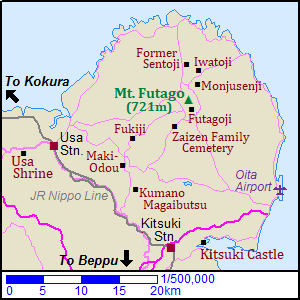
Kunisaki Peninsula is in the northeast part of Oita Prefecture.
It has a roughly round shape, and the diameter is about 35 to 40 kilometers.
Several peaks of the inactive volcanoes are at the center of the peninsula.
The highest peak is Mount Futago (両子山, 721 m).
The peninsula was formed by the volcanos, so whole area of the peninsula is hilly.
Many valleys and hills radiate from the center of the peninsula.
There is Kitsuki city in the south part of the peninsula.
And some small villages are dotted along the coastline.
Oita Airport is on the southeastern coast.
Since ancient times, this area had been a religious training place for mountain worship.
In the early 8th century, it is said that priest Ninmon, who was a mystery man, founded 28 temples in this peninsula and created 69,000 Buddha statues in his life.
These temples were set up on the six districts along the valleys radiating out from Mount Futago.
"Six districts" is called "Rokugô" in Japanese.
28 temples by Ninmon were classified into three groups.
Each group was given a meanings.
These are "to learn", "to train", and "to mission".
A set of the three meanings was called "Manzan".
Therefore, Kunisaki Peninsula has been called Rokugô-Manzan (六郷満山).
In the 12th century, other 37 temples were added, and Rokugô-Manzan had 65 temples.
Rokugô-Manzan was originally Tendai school from Chinese Buddhism, but Shinto religion of Usa Shirine had been mixed.
So, the object to worship became both Buddha of Buddhism and Hachiman gods of Shinto.
Now a pilgrimage route visiting 30 temples and Usa Shrine is set up.
No railroad runs in Kunisaki Peninsula.
JR Nippo Line runs through the southwestern base of this peninsula.
Main route bus runs along the coastline, but it runs only 4 to 6 times a day in all sections.
Therefore, to tour around this peninsula efficiently, you should use a rental car.
Or, the regular sightseeing bus is convenient.
It visits some popular spots in this peninsula and Usa Shrine from Oita, Beppu and Usa stations.
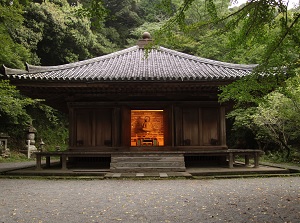
Odou in Fukiji
Photo: Oita Prefectural Tourism Association
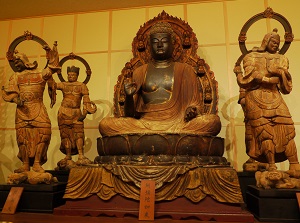
Displaying Buddhs statues in Maki-Odou
Photo: Oita Prefectural Tourism Association

The popular spots are the following.
Fukiji (富貴寺) is a Buddhist temple located about 22 km east of Usa Shrine and is in the southwestern valley of Mount Futago.
It is the 4th temple on the pilgrimage route.
It is a temple of Tendai school and it is said that it was founded in 718 by Ninmon.
The main temple is Ôdou, and was built in the 12th century.
It is the oldest wooden building in Kyushu Island and is designated as a national treasure.
Amida-Nyorai is enshrined as the principal image.
Maki-Ôdou (真木大堂) is a temple located about 5 km south of Fukiji.
It is the 5th temple on the pilgrimage route.
It is said that this temple was one of the buildings in Denjôji temple founded around 720 by Ninmon.
Denjôji was a great temple, but it had been destroyed by fire in the 14th century.
Later, only Maki-Ôdou was built.
Old nine Buddha statues designated as important cultural properties are enshrined in the small treasure house.
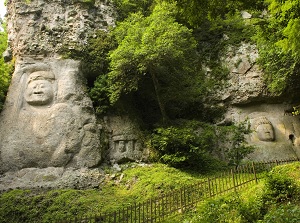
Kumano Magaibutsu
Photo: Oita Prefectural Tourism Association
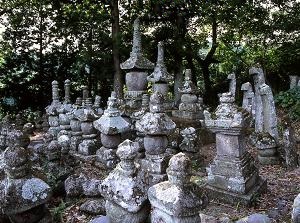
Zaizen Family Cemetery
Kumano Magaibutsu (熊野磨崖仏) is located about 3 km south of Maki-Ôdou.
There are two large stone Buddha statues created by carving into a rock face in the mountain.
One is 8 meters high and another is 6.7 meters high.
It is said that they were created around the 12th century.
There is Taizouji temple (the 6th temple on the pilgrimage route) founded in 718.
From there to the place, we climb up the steep stone steps for about 300 meters.
Zaizen Family Cemetery (財前家墓地) is located about 10 km northeast of Maki-Ôdou.
Zaizen was a local ruling family in this area in the middle ages.
The family cemetery is on a hill near the peak of Mount Futago.
The cemetery is filled with 111 tombs, stone lanterns, and pagodas, and these were built from the 12th to the 13th centuries.
The Pagoda about 3 meters high in the center of the cemetery is designated as an important cultural property.
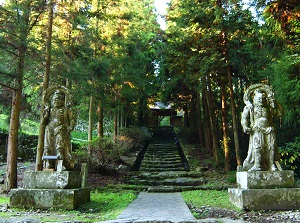
Entrance of Futagoji
Photo: Oita Prefectural Tourism Association
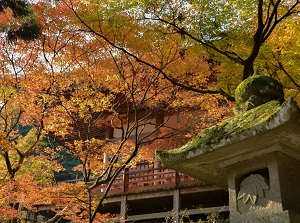
Futagoji in autumn
Photo: Oita Prefectural Tourism Association

Futagoji (両子寺) is a Buddhist temple of Tendai Buddhism.
It is the last 31st temple on the pilgrimage route.
It is located about 1 km south of the top of Mount Futago and is about 6 km northeast of Zaizen Family Cemetery.
It is said that the temple was founded in 718 by Ninmon, and it became the central temple of Rokugou-Manzan.
At the entrance, a pair of stone statues of Niou (Guardians of the temple) stand.
The height is about 2.4 meters and they are the largest statues in Kunisaki Peninsula.
Some buildings are dotted in the precinct.
And the colored leaves in the precinct are popular in autumn.
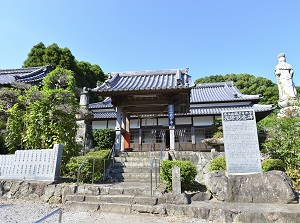
Iwatoji
Photo: Oita Prefectural Tourism Association
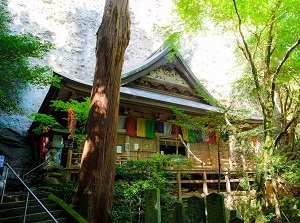
Monjusenji
Photo: Oita Prefectural Tourism Association
Iwatoji (岩戸寺) is a Buddhist temple located about 5 km north-northeast of Mount Futago.
It is the 18th temple on the pilgrimage route.
This temple was also founded by Ninmon in 718.
There are also a pair of Niou statues built in 1478 at the entrance.
And Kunisaki Pagoda 3.3 meters high in the precinct was built in 1283, and it is said that this is the oldest Kunisaki Pagoda.
Monjusenji (文殊仙寺) is a Buddhist temple located about 3 km south of Iwatoji.
It is on the northeastern mountainside of Mount Monju (617 m).
It is the 21st temple on the pilgrimage route.
It is said that this temple was founded in 648.
There is a Niou statue at the entrance of the temple, and about 300 stone steps lead to the precincts.
The stone pagoda in the precinct is about 9 meters high, and is the largest in Japan.
From the precinct, we can view Seto Inland Sea to the north.
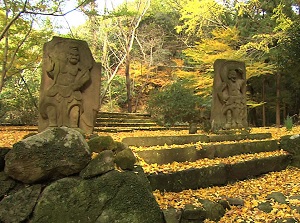
Ruin of former Sentoji
Photo: Oita Prefectural Tourism Association
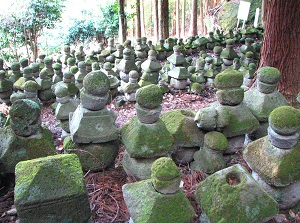
Cemetery in former Sentoji
Photo: Oita Prefectural Tourism Association
Ruin of former Sentôji (旧千燈寺跡) is the ruin of the original Sentôji temple.
It is located about 2 km northwest of Iwatoji, but there is a mountain between the temples and the distance is about 8 km by road.
It is said that the original temple was built by Ninmon in 718 and Ninmon died here.
The temple was big, but it was destroyed in the civil war in the late 16th century.
After that, small temple was rebuilt, but it was moved to the foot of the hill in the early 20th century.
Old temples are dotted in this ruin, and there is a cemetery with about a thousand tombs and pagodas.
How to get here
By JR limited express, to Usa, about 40 to 50 minutes from Kokura, about 1 hours and 40 to 55 minutes from Hakata, about 30 minutes from Beppu.
From Beppu and Oita stations, the regular tour bus is operated.
It is convenient to tour around the wide area.

